Coco Chanel—Her Pearls and Maltese Cross Cuffs | Classic Chicago Magazine
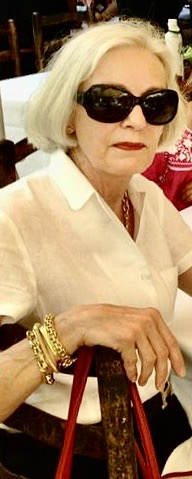
By Cheryl Anderson
“Go and fetch my pearls. I will not go up to the atelier until I have my pearls.”
—Chanel
Chanel’s lovers, Grand Duke Dimitri Pavlovich and the Duke of Westminster, (also know as ”Bendor”), gave her ropes of pearls of every length and size of pearl and precious jewels. She loved both men, (for a time), and their generosity. However, it was she that made their generous gift of pearls chic, wearing them with beach pajamas, evening gowns, hacking jackets, (why not indeed wear pearls when attending a hunting party), jersey outfits, and everything in between—they were a perfect accent to her minimalistic fashions and perfectly suited her style.
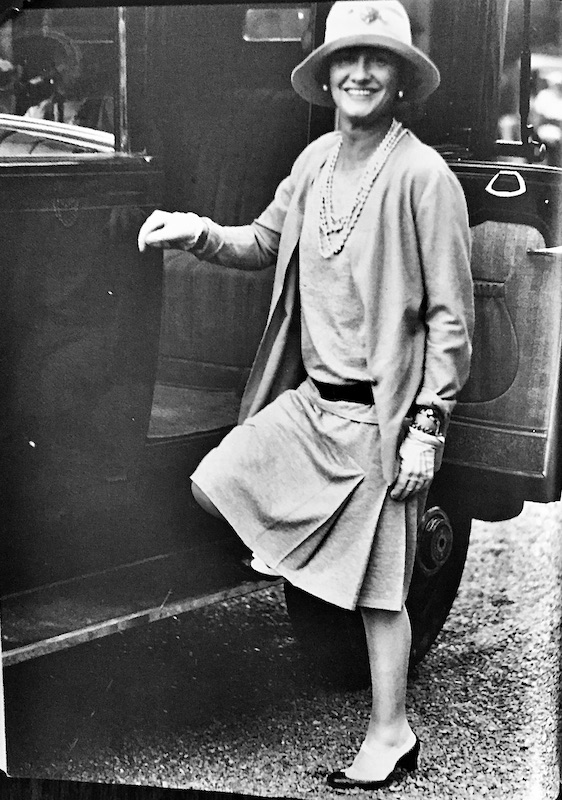
Out of all the many jewels she received from Dimitri and the Duke, it’s said, the pearls were her favorites—pearls are often referred to as the “Queen of Gems”, beautiful and feminine. The luster of the pearl reacts with the body’s every movement. Author, Emma Baxter-Wright, describes Chanel’s feelings about pearls thusly: “The luminosity of pearls capture the light, she felt, and gave a flattering glow to the skin and eyes. Like much that she did to democratize fashion, jewelry was not to be saved for impressive occasions.”
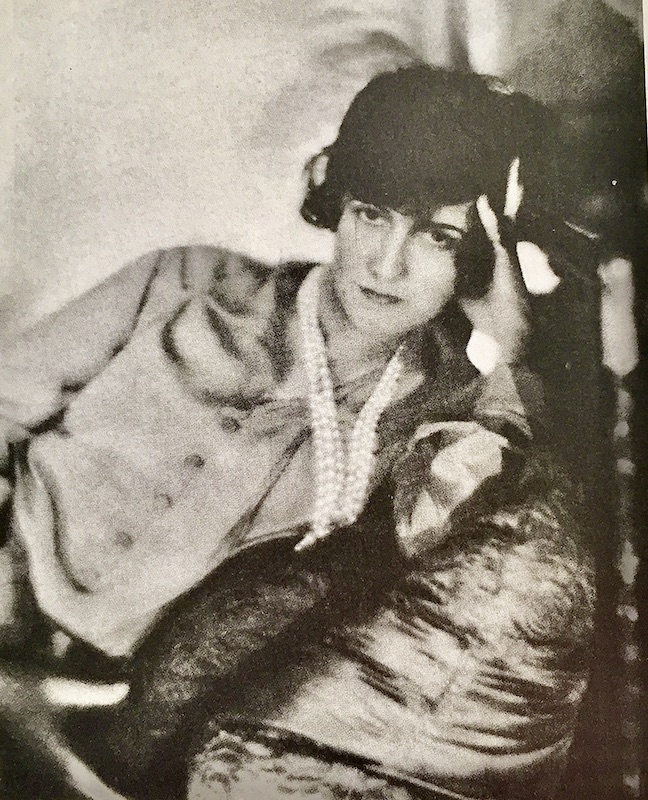
Quoting from, Chanel—Collections and Creations,: “Only pearls could highlight dark tanned skin, only pearls could bring out sparkling eyes and white teeth. Only pearls could capture the light, illuminate the face, embellish it like an invisible layer of makeup.” Chanel started the trend of getting a tan—it caught on.
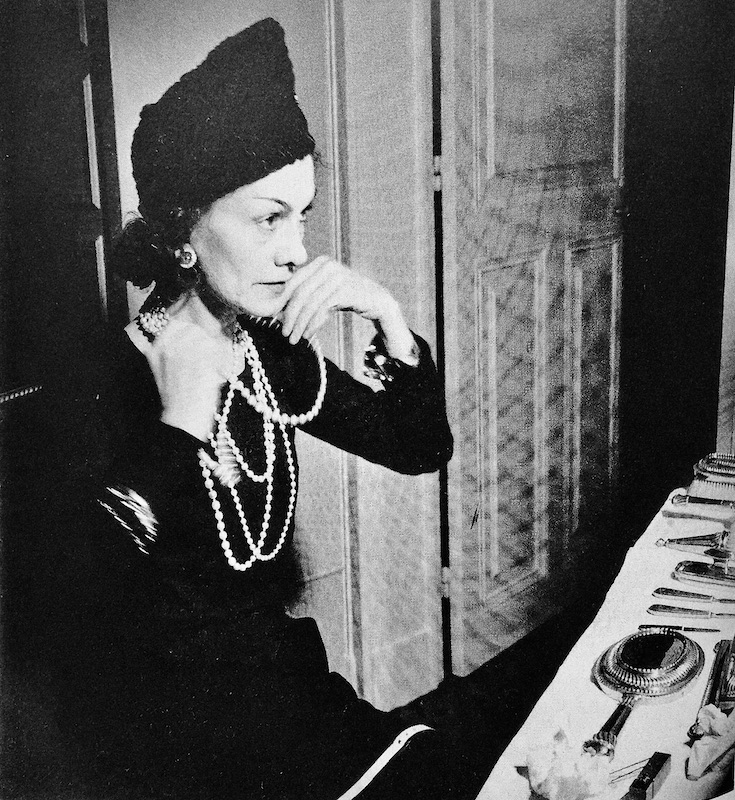
The mystery that so often surrounds Chanel regarding her taste for and love of pearls came from, has many possibilities. Could it be the liaison with Boy Capel or the gifts from Dimitri or, as some say, was it because she was always drawn to the pearls in Renaissance paintings?
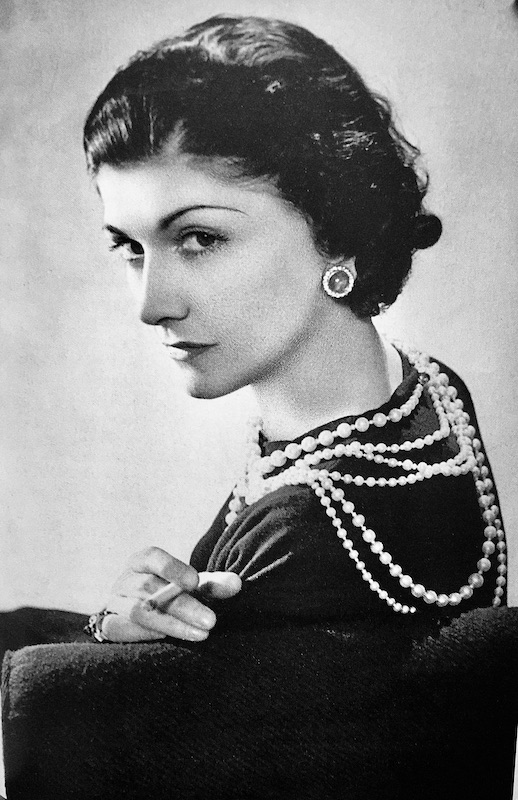
Her jewels and pearls were kept in a vault for safe-keeping, but the photos tell us they did not lay idle for she wore her pearls and jewels often, looking just right and not over-accessorized. The strands of Romanov pearls, and many jewels, were from Dimitri he had secretly taken out of Russia. So much was her love of pearls, I read, it was the pearls that prompted her to create large fake pearls, launching them in a costume jewelry line—the first to do so. Ropes and ropes for everyone!
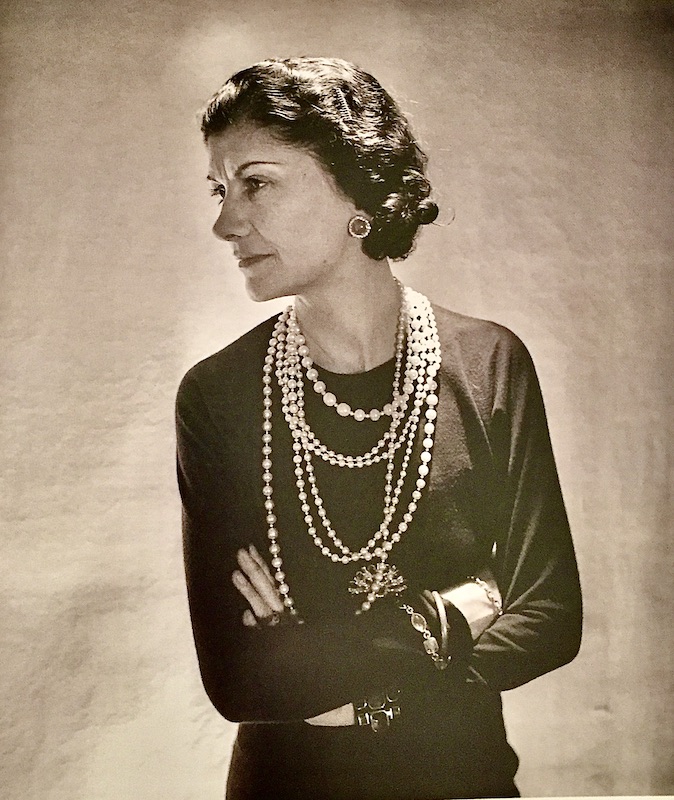
Author, Justine Picardie, interestedly points out: “Chanel…used jewelry to display her authority, as well as her social supremacy. These were made manifesting the manner in which she wore her precious gems—the Duke of Westminster’s pearls and emeralds slung over tweeds and plain woolen knits, in an insouciant disregard for tradition—and in her apparently effortless ability to persuade rich women to follow suit.”
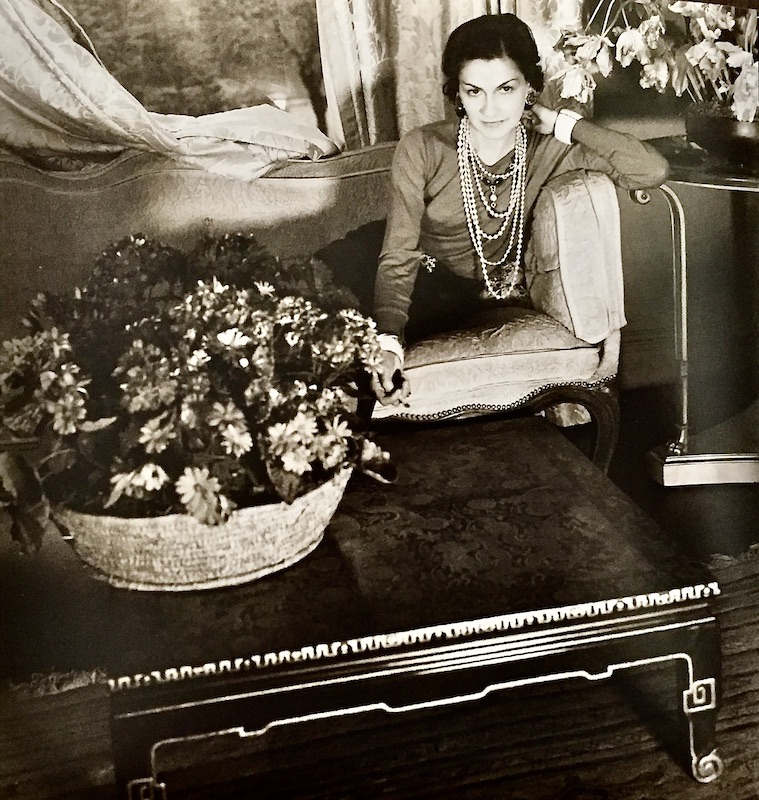
The crash of the stock market and the Depression that followed had its impact on jewelry fashion. Cecil Beaton wrote in, The Glass of Fashion: “Chanel’s genius was to invent ‘a mode of brilliant simplicity’: ‘Ruthlessly women were stripped of their finery, fitted with a tricot and skirt or plain dress; and when they looked like Western Union messenger boys, when they had been reduced to chic poverty, then, and only then, did she drape them with costume jewelry [sic] with great lumps of emeralds, rubies, and cascades of pearls.’ ” This attitude is similar to when she made the decision to use machine embroidery instead of it all being hand done, costume jewelry brought the look she sought sans the cost.

Her well-to-do clients had the real thing, of course, only wearing one or two significant pieces at one time was the norm. Chanel’s costume jewelry was a huge success and changed the way costume jewelry was viewed—her view was that: “It’s disgusting to walk around with millions of dollars around the neck because one happens to be rich…I only like fake jewelry…because it’s provocative.” Mixing the faux with the real thing, one could pile on layers of accessories at one time, that heretofore, was not what one did. Once a faux-pas, fake became de rigueur—few could have initiated, and succeed with, such a trend other than Chanel. She gave the ladies permission to simply pile it on!

For Chanel, it wasn’t too much to pin a fabulous brooch on a hat or dress, or both at the same time, wear stacks of bracelets and multiple necklaces. Pictures of Chanel tell the story of her attitude towards jewelry saying: “The point of jewelry isn’t to make a woman look rich but to adorn her—not the same thing.”

Roderick “Rory” Cameron, the author of The Golden Riviera, remembered meeting her on the Riviera in 1933 when he was nineteen. Anne de Courcy recounts Rory’s impression: He “described her at fifty as ‘irresistible. Absolutely’.” It’s thought that she was probably wearing white duck pants with a striped top at the time—casual Riviera style. He especially recalls the jewelry she wore; ropes of pearls with seed pearls instead of knots, clusters of emeralds with weighty gold links joining them, and according to Anne de Courcy, Rory especially remembered the “wide ivory bracelets encrusted with a Maltese cross of rubies.”

In 1927, Chanel met Fulco Santostefano della Cerda the Duke of Verdura. It was Verdura whom she went to in order to design her costume jewelry line, and redesigning and updating pieces of her personal jewelry from Dimitri, Bendor, and perhaps other lovers. Verdura presented her with ideas on how the jewels could be made into pieces that more suited her style.

Diane Vreeland was a dear friend of both Chanel and Verdura—it’s said it was she that brought them together. A pair of gorgeous Maltese cross brooches were gifted to Vreeland. She is quoted as saying: “You gotta have style…It helps you get down the stairs. It helps you get up in the morning. It’s a way of life.” Both ladies lived for fashion, and as we know, both had a significant influence on fashion.
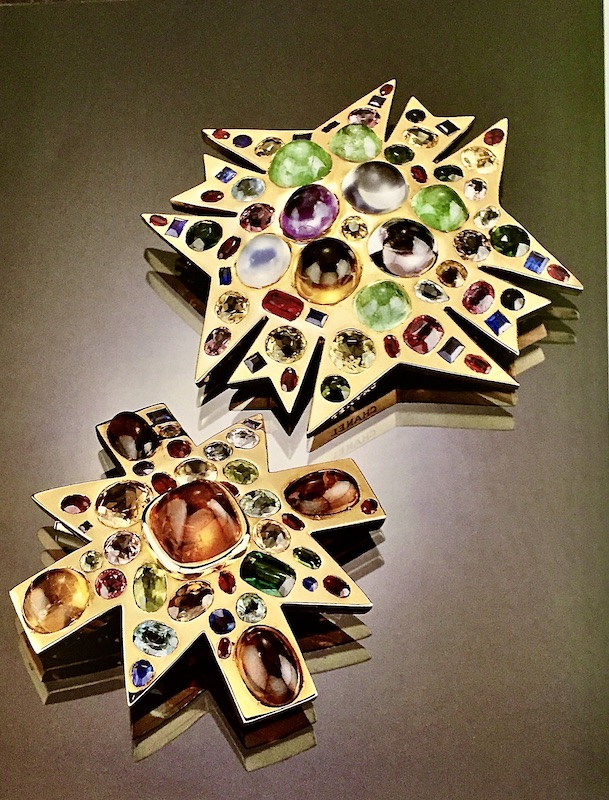
Another story of how Verdura met Chanel, is that their meeting took place at a party in Venice hosted by Linda and Cole Porter, great supporters of Verdura, in 1925—he had previously met the Porters in 1919. However they met, Chanel was impressed by his talent and hired him as a textile designer in 1927—he became the head of Chanel jewelry for eight years.

It was Verdura that designed Chanel’s stunning iconic Maltese Cross Cuffs—a white enamel cuff with magnificent cabochons and semi-precious stones set in a gold cross—his unique interpretation of the Maltese Cross. Verdura designed the cuffs shortly after he began working for her. She adored them and wore them often, with casual or formal attire. They are slightly mismatched, but perfect together. The Maltese Cross cuffs are the most iconic pieces to come out of the Verdura-Chanel collaboration and became the hallmark of the Verdura brand—very few of the pieces Fulco collaborated with Chanel have resurfaced.
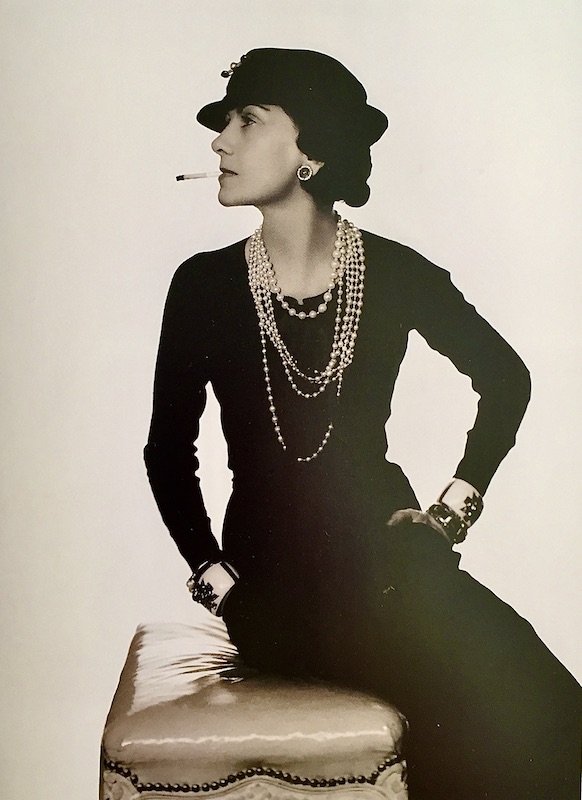
First appearing in 1930, Verdura cuffs were added to the costume jewelry line in the Chanel boutiques. They were modeled after Chanel’s cuffs—with many beautiful variations. Verdura left Chanel in 1934 and headed for the United States where he found great success.
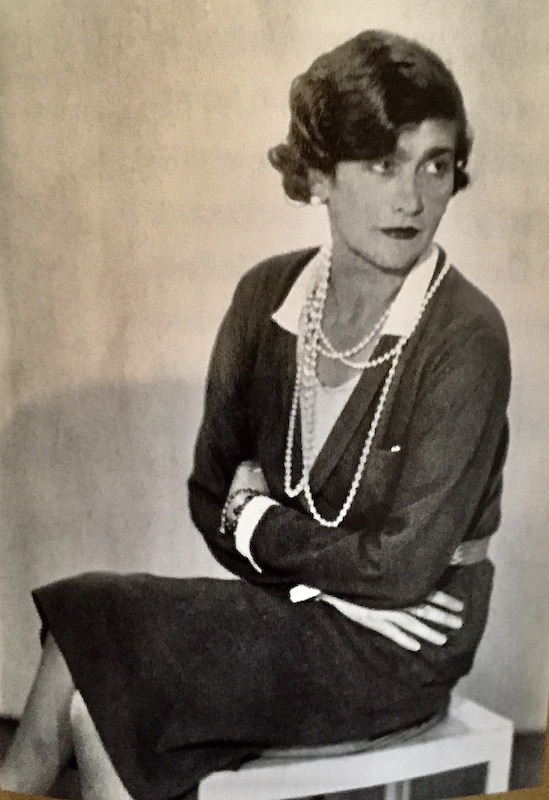
Chanel and Verdura went on trips to Italy visiting the mosaics of Empress Theodora in the Basilica of San Vitale in Ravenna—inspiring the Byzantine style of Chanel’s jewelry. With Verdura’s guidance, Chanel viewed the Renaissance jewelry at the Treasury of the Munich Residence and the collection of Augustus the Strong and Charlemagne in Dresden. Theirs was a very close relationship.
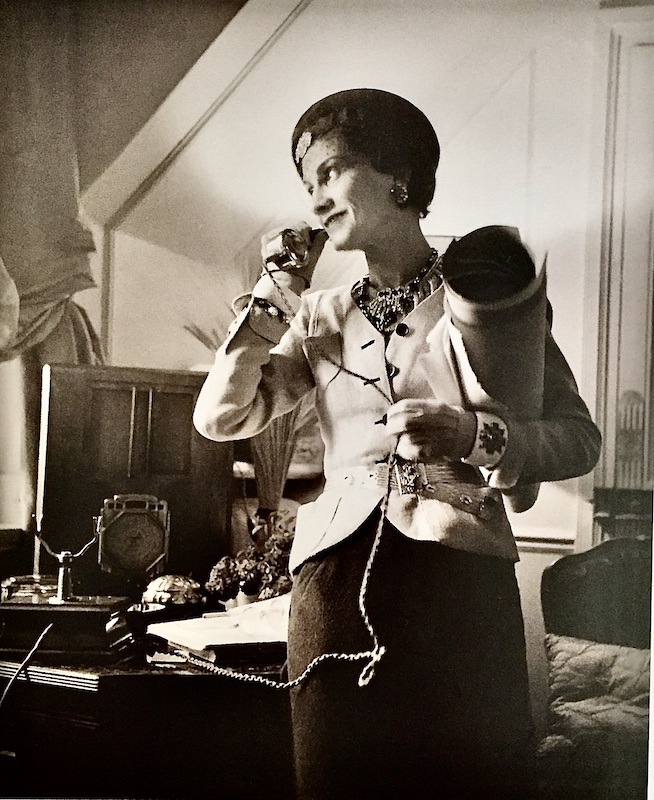
Verdura grew up in Sicily, close to the Amalfi Coast and the Island of Malta, where the First Crusades were based, so it’s easy to see the Maltese cross was a design he would have been familiar. Yes, Verdura’s cross design is said to be fashioned after a Maltese cross, but it’s thought that, perhaps, Chanel’s cuffs reflect the shapes of the mosaic pattern of the Aubazine floor, the convent where she spent eight years of her youth—could the mosaic pattern have influenced its design? Once again, one is left to wonder if that was the case—as well as how exactly did Verdura and Chanel meet.
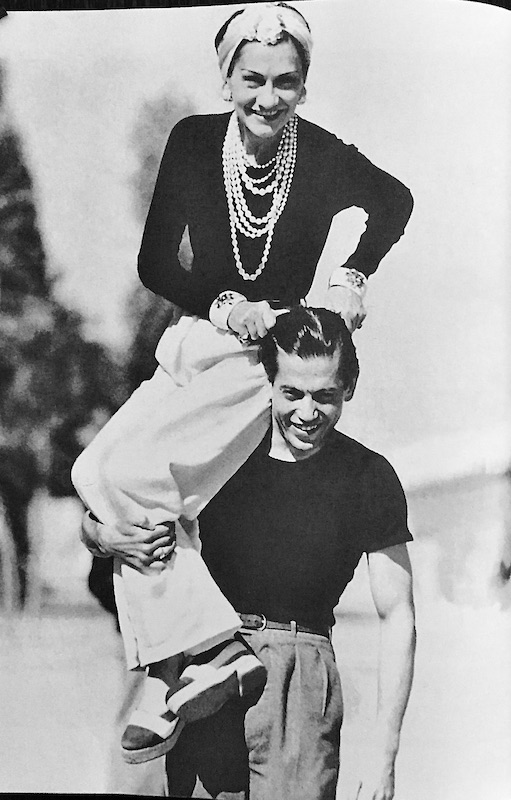
The Byzantine look of the cuffs with the Maltese cross, and other pieces to follow, may have been from her recollection of the trip she took to Venice with Dimitri, where on display in the Cathedral of St. Mark’s was a treasure chest of Maltese crosses, rough gold pieces, and very large gems—harkening back to the glory of Byzantium. Who’s to know, but she quietly tucked away the ideas for a later date. Dimitri pointed out that the Byzantine jewels were similar to the ones he had given her. Chanel was quoted as saying: “Why does all I do become Byzantine?”
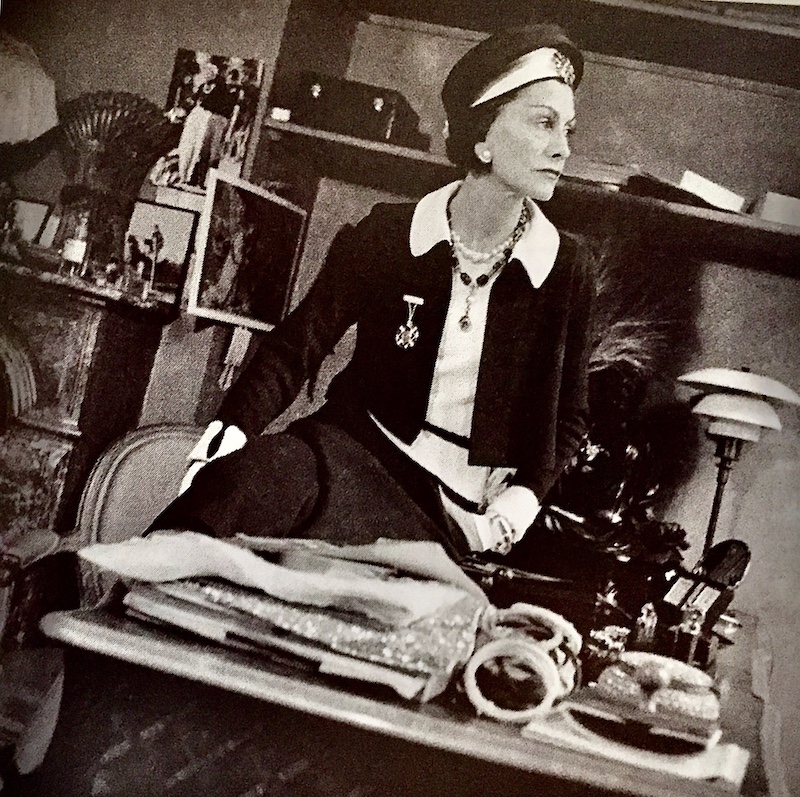
Quoting Janet Wallach: “Dimitri plied her with ropes of fabulous pearls, chains of heavy gold and crosses encrusted with rubies, emeralds and semi-precious stones. Like a scene from a Diaghilev ballet, the jewels, the furs, and the polished manners sparkled [sic] memories from another world.”
Chanel, famously said: “A woman should have ropes and ropes of pearls.”—believing that they should not be hidden away but worn and enjoyed. Wearing multiple ropes of pearls may have started with the gifts from Dimitri and the Duke of Westminster, but like with so many of her ideas, with great success, she took those ideas to the next level and created a style. Pearls, as much as the “little black dress”, will forever remain part of the look that can only be Chanel.
The history and stories about The Little Black Dress will be explored next time. Coco Chanel has left us a legacy of trends we’ve all adopted. For me, The Little Black Dress is right there at the top of the list.
À bientôt
Quotes and pictures:
Coco Chanel: The Legend and The Life, by Justine Picardie, published by it books, an imprint of Harper Collins Publishers.
Chanel and Her World: Friends, Fashion and Fame, by Edmonde Charles-Roux, published by The Vendome Press
Chanel: Her Style and Her Life, by Janet Wallach, published by Doubleday
The Little Book of Chanel, by Emma Baxter-Wright, published by Carlton Books
Chanel’s Riviera, by Anne de Courcy, published by St. Marten’s Press
Chanel: Collections and Creations, by Danièle Bott, published by Thames & Hudson





